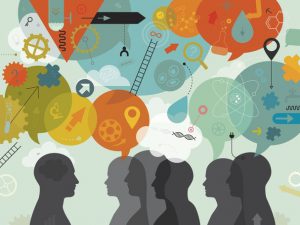Socrates contended that a good instructional methodology must necessarily focus on two things: students as the core of the educational enterprise and the purpose of education as wisdom. In conjunction with this, real classroom teaching consists not of one-way traffic of ideas but a mutual dialogue between the ones imparting education and the others receiving it. Similarly, real education does not translate into telling the students what to think but rather training them to think. In contemporary times, we are at a marvellous interaction between the digital and the physical in the realm of education: Face-to-face classroom activities can easily be supplemented with technological tools to aid learning these days. As per the latest UGC guidelines on Blended Learning, classroom teaching has to be maintained alongside “computer mediated activities to deliver instruction.”
The onset of the Covid-19 Pandemic mandated a sudden and involuntary shift to digital teaching and learning methods. With the gradual shift back to the ways of life before the pandemic, offline teaching too has been resumed on campuses across India. Perhaps this is a perfect opportunity to blend the online mode with the offline methods of teaching and the digital with the physical sources of knowledge. Ideally, for blended learning to provide the best outcomes, both the mentor and the mentee should share the same physical classroom space. Fortunately, the current scenario has made that possible. At IILM University, Gurugram, the various modules taught in the numerous programs across the University seek to actualise the aforementioned concept of Blended Learning. Textbooks and articles shared with students as part of course work are further complemented with guest sessions, movie screenings, debates, panel discussions, and other interactive and experiential activities. Moreover, learning resources such as video links, recordings or podcasts can be shared with the student before the actual class giving the students a chance to be aware of what is due for discussion in the classroom. It further motivates them to interact and share their understanding of a topic in the class, thereby making the whole activity multiple times more fruitful.
Any pedagogy that seeks to limit the possibilities of learning must immediately be replaced with a more inclusive and open-ended approach to education. This would mean letting the students bring in their subjective understanding of theories and concepts discussed in the classroom. Once we extend real ideological accommodation to all students, learning is no longer limited to the written word; it stretches way beyond that into learning real-life experiences that help make textbook knowledge more applicable. The New Educational Policy has taken a substantial step in placing the student at the core of all educational activities. It has brought in the recognition that the students are the primary stakeholders in this system and, therefore, all policies should necessarily be more student-centric. Students feel a greater degree of inclusion when they are made to feel comfortable with newer methods of learning. The era of rote-learning and feeding readymade answers is fortunately behind us. The new classroom has seeped into all the available modes of knowledge, ranging from books to journals to cinema to theatre and what not! Therefore, a student now has the excellent opportunity not to try and catch philosophy from thin air but apply the written word into her/his own life, understand it on a more personal level, and become more aware of the real purpose of education.


 Adopt a Furry friend, don’t know about you but, my dog Raja was one of my strengths during my tough times, fostering him and getting greeted by him with those extra cuddles was so therapeutic.
Adopt a Furry friend, don’t know about you but, my dog Raja was one of my strengths during my tough times, fostering him and getting greeted by him with those extra cuddles was so therapeutic.





